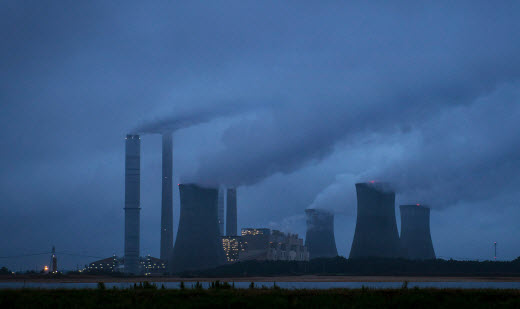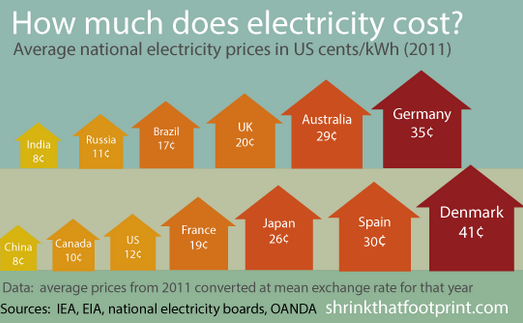$15 an hour minimum wage laws have suddenly sprouted all over the country. What began as an experiment, limited to a couple thousand employees at the Seattle area airport, spread to Seattle itself last year, recently to the enormity of Los Angeles, and is now close to happening to major fast food chains across all of New York State. Chicago and Kansas City are adopting wages of $13 an hour. Other cities are considering. The sudden surge is a profound grass roots triumph.
The leap to $15 an hour — instead of the $10.10 President Obama has lobbied for — is no less than stunning. A fair argument can be made that it is too disruptive to business, except that in all cases the increases are gradual to allow time to absorb the shock, only rising to the full amount by 2020. Congress, determined to prove its irrelevance, is far behind. It refused even to consider Obama’s modest proposal in 2013, and is sure to ignore a current attempt at $12 an hour even though that wouldn’t happen until 2020.
arguing for the status quo
Conservatives take the side of business and continue to fight a rear guard action in editorials and op-ed pieces. They have called forth studies which say that prices will rise, jobs will be lost, the wrong income groups benefit the most, and income inequality will not be cured. All may be true to an extent, but they ignore the benefits to the 3.3 million workers now paid the poverty level $7.25 an hour, and to several times that number now earning more than that, but less than $15 an hour.
job loss
Economic orthodoxy says that when the chalk line on the blackboard labeled “wages” goes up, the chalk line labeled “jobs” must go down. Reality is more complex, and a number of studies say that the impact is minimal. David Brooks, a conservative columnist at The New York Times, wrote a column recently titled “The Minimum-Wage Muddle” which is designed to confuse and with which we take particular issue.
He is obliged to begin by citing just such a minimal-effect study because it is so well known in the social policy field. Two economists compared the job market in adjacent counties of two adjacent states (Pennsylvania and New Jersey) after one state had raised the minimum and the other had not and found their job-loss differences negligible. Even Brooks’ own newspaper says,
“With a recent accumulation of economic literature suggesting that moderate increases in the minimum wage have little to no cost when it comes to employment, opposition even among economists in the business world has begun to melt.
Not to go quietly, Brooks then skillfully says,
“Some economists have reported that there is no longer any evidence that raising wages will cost jobs. Unfortunately, that last claim is inaccurate. There are in fact many studies on each side of the issue.
…leaving the suggestible reader to remember “inaccurate”. Similarly, Thomas MaCurdy, of Stanford and the Hoover Institution, says “Advocates of a higher minimum wage argue that the number of workers who gain far exceeds those who lose”, but then adds, “Whatever the credibility of this calculus…”, as if it perhaps is not true, that more than those 3.3 million (and the multiple we mentioned) will lose their jobs than the number who will gain a higher wage.
And that’s what David Neumark says outright. The University of California professor, whose work on the subject is often quoted, says “It’s kind of a wash. The hit to losers wipes out the gains for winners”; a higher minimum wage costs as many low-skilled workers their jobs as help those who keep them. No data is provided because there is no data to support such a claim.
Brooks cites a study by Joseph Sabia of San Diego State University that says single mother employment dropped 6% when the minimum wage was raised 10%. Sounds alarming. But wait. Isn’t there a greater good that 94% began to earn 10% more? As for studies, Brooks says “there are dozens…showing significant job losses”.
But let’s look at that. As “one of the most studied topics in all of economics”, the minimum wage’s impact on jobs is well suited to a “meta-study”, a technique adopted from medicine where many small clinical trials are combined to produce consensus estimates. The Center for Economic and Policy Research crunched, by our count, hundreds of studies to conclude “that the minimum wage has little or no discernible effect on the employment prospects of low-wage workers”.
Brooks then says, “A study by the Congressional Budget Office found that a hike to $10.10 might lift 900,000 out of poverty but cost roughly 500,000 jobs” and goes no further, because that would have required him to report that the CBO went on to say that 16 million low wage workers would benefit from an increase, another 8 million currently paid above the minimum would probably see increases because of stepped wage structures in companies, and the aggregate of $31 billion added to paychecks — every dime of which would be spent by low-wage workers — would give a boost to the sluggish economy.
Nor does Brooks explain that CBO actually believed job losses would range from zero to 1 million, and they gave the eventuality of any job losses at all only a 2/3rds chance of occurring. The CBO had done no studies of its own and had simply settled on the midpoint of 500,000. A New York Times editorial called it “essentially the budget office’s way of saying it doesn’t really know what would happen”.
It’s a good example of selective quoting to make one’s case, with truth as casualty.
anti-poverty
Conservative pundits and op-ed writers point to a study by MaCurdy that shows “the failure of minimum-wage hikes as an antipoverty policy”. Neumark says that raising the minimum wage is no cure for poverty. “About half of poor families have no workers, in which case a higher minimum wage does no good”, he writes. (Really? It does no good for the other half?)
Along with Cornell’s Richard Burkhauser, Sabia found that the minimum wage increases are “horribly targeted”, in Brooks’ words. Only 11.3% of beneficiaries are from poor households.
Around 60% would go to households earning less than three times the federal poverty guidelines, which today would be around $70,000 for a family of four.
Neumark says, “34% of low-wage workers were in families that were far from poor, with incomes more than three times the poverty line”.
These conclusions well illustrate that economists look upon the minimum wage as misdirected social policy. The mistaken assumption by all is to assume that helping people rise above a poverty wage is thought by its advocates to be an attempt to cure poverty that has landed wide of the mark. Who is saying that? They seem to suspect a secret motive, as if overcoming the injustice of people paid so little is not motive enough?
When Los Angeles Mayor Eric Garcetti says, “It’s deplorable and bad for our economy to have one million Angelenos stuck in poverty even when working full time”, he is speaking of the injustice of their exploitation. When New York’s Governor Andrew Cuomo was asked why the state’s edict applies only to the fast food sector, his answer was because the industry was one of the “grossest examples” of not paying employees fairly. He said McDonald’s made billions of dollars in profits while its workers are forced to turn to public benefits programs to supplement their paychecks.
Again, it is the inequity of low wages that is driving the movement, not policy. It’s about frustration and anger and the belief that the system is rigged to trap them in penury. Economists should remove their eyeshades and look around.
training wheels
Those who want business to continue to enjoy artificially low labor costs promote low-wage jobs as a way for our youth to gain work experience; raising the wage in the fast food industry, which accounts for fully half of those paid the minimum, will cause them not to be hired, they argue. Pundits like Brooks make assumptions for which there is no evidence, even if you can make sense of them. He says that “because low-wage workers get less work experience under a higher minimum-wage regime, they are less likely to transition to higher-wage jobs down the road”.
The fallacy is that many assume that fast-food workers are mostly teenagers. On the contrary, 70% are over age 20, the average worker’s age is 29, more than two-thirds are the primary wage earners in their family, and 26% are raising a child, says this article.
price rises
MaCurdy says that if liberals are correct that there is minimal job loss from a wage increase, then business owners must be recovering the added cost by raising prices. “My analysis concludes that more poor families were losers than winners”. This is a baffling claim. Wages rise for only a fraction of the populace yet this drives up prices throughout the economy to such a degree that the poor are forced to spend more than they gain? “Nearly one in five low-income families benefited, but all low-income families paid for the increase through higher prices”. Not just “all low-income families” pay for the wage increase. All income groups pay the higher price, but spread so widely as to make increases barely noticeable, as the sidebar should make clear.
Why shouldn’t prices rise to the level that we ought to be paying because that’s the true cost of providing the good or service? Brooks again:
“MaCurdy found that the costs of raising the wage are passed on to consumers in the form of higher prices. Minimum-wage workers often work at places that disproportionately serve people down the income scale. So raising the minimum wage is like a regressive consumption tax paid for by the poor to subsidize the wages of workers who are often middle class.”
He’s gone all the way to now saying the wage gainers are middle class and preying on the poor, who, by absence of any mention, apparently haven’t even received any of the benefit of the wage increase. Muddle indeed.
subsidies
The sudden moves by cities and now states to much higher minima is undoubtedly caused by awakening to just how much the poverty level minimum wage is costing them. When workers must fall back on public assistance, the taxpayer is made to subsidize parasitic business models. Andrew Cuomo wrote the following in The New York Times:
Fast-food workers and their families are twice as likely to receive public assistance compared with other working families. Among fast-food workers nationwide, 52% — a rate higher than in any other industry — have at least one family member on welfare.
New York State ranks first in public assistance spending per fast-food worker, $6,800 a year. That’s a $700 million annual cost to taxpayers.
Nationally, the taxpayer adds to his or her tab federally-paid Medicaid, food stamps, housing assistance and low-earner tax credits.
The editorial crew at The Wall Street Journal has difficulty grasping this:
We understand that people are frustrated [by stagnant middle class incomes]. Harder to understand is why so many of our media brethren have been persuaded that suddenly it’s the job of America’s burger joints to provide everyone with with good pay and benefits.
Tax dollars also subsidize major retailers. Data from Wisconsin in 2013 calculated that the average Walmart superstore cost taxpayers $904,000 a year in various subsidies, or more than $5,000 per employee. Starting in 2016, California plans to publish the names of employers with more than 100 workers on Medicaid, and how much these companies cost the state in public aid.
ethics
The pundits and economists we have cited are representative and all are effectively against any increase in the minimum wage. We can say that, because none of the sources speak of raising it, even just a little bit. Neumark ends with, “The desire to help poor and low-income families is understandable. But increasing the minimum wage is a misguided way to do it”. Therefore, do nothing. No alternative is mentioned. There are economists so imbued with the free market that they believe each of us can simply bargain with multinational giants for a wage to our liking.
These pages have carried a number of articles on the minimum wage as the debate has progressed. None have been about curing poverty or closing the income gap. Both are larger problems that the minimum wage cannot fix.
Rather, they make the point that an employer usurps a worker’s time on this planet — which may be all they have to make their way — and should have no right to keep a fellow human trapped in penury. If the right to pay poverty level wages is what it takes for a business to survive, then it deserves to fail. Why isn’t that capitalism? Why should our wallets be subsidized by low prices made possible by poverty level wages paid to other Americans? Our argument has always been protecting the low-wage worker from exploitation.
Aug 7 2015 | Posted in
Economy |
Read More »




